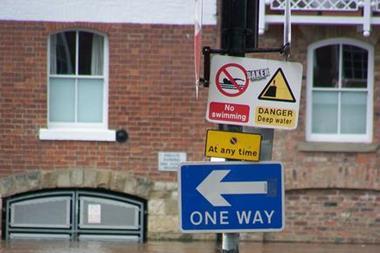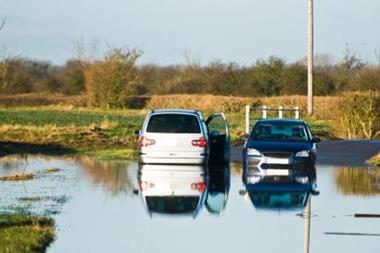The ABI has got what it wanted - guarantees on flood spending.
Last night, at a drinks party hosted by the ABI for the media, the mood amongst the ABI officials was buoyant.
Hours earlier they had struck a landmark deal with the government on the continued provision of insurance cover for properties at risk of flooding. They were clearly pleased with the outcome.
The ABI’s director general Stephen Haddrill hailed the agreement as good news for everyone at risk of flooding.
In essence, the agreement will see insurers continue to provide flood cover under the Statement of Principles until 2013. In return, the government will take a number of steps including developing a long-term investment strategy for flood prevention.
The provision of insurance cover for properties at significant risk of flooding has been a hot topic long before last summer’s catastrophic floods. Insurers had threatened to tear up the Statement of Principles if the government did not increase its spending on flood defences.
“Many insurers complain [the Statement of Principles] distorts the operation of the insurance market.
In last year’s Comprehensive Spending Review the government pledged to increase flood spending to £800m by 2010/11 but insurers said this was not enough.
The ABI’s had demanded a cessation of building properties on flood plains and an increase in flood spending to £1bn by 2010/2011
So what does the new agreement actually deliver? And is it a good deal for the insurance industry?
There are a number of key points for insurers. First it sets a date for the expiration of the Statement of Principles, which has been in existence for eight years and is seen as overdue for review. Many insurers complain it distorts the operation of the insurance market, hindering the development of specialist flood insurance products and limiting incentives for the uptake of cost-effective resilience measures to protect individual policies.
The agreement also excludes properties built after 1 January 2009. This is another key point for the insurance industry which has been concerned about providing cover for properties built on high risk flood plains. The ABI says that a third of the three million new homes the government plans to build by 2020 will be built on flood plains.
“The insurance industry still has a final bargaining chip: the agreement is not binding.
A further point is that the government has committed to set out and implement a long-term strategy for reducing flood risk. It will also look at the management of surface water flooding, which was a key factor in last summer’s floods.
So far so good.
What is absent – at least for the next two years – is any more money for flood defences. The additional money the government pledged to spend in the Comprehensive Spending Review will not be increased. Any additional funding will come after 2011, after the government’s long term strategy plan has assessed funding requirements.
The government will publish the investment plan in the spring, and this will be a crucial test of whether the agreement has any value.
But the insurance industry still has a final bargaining chip: the agreement is not binding and progress will be reviewed annually. If the government’s progress does not live up to expectations, and an adequately funded long-term investment strategy is not developed, the deal could be scrapped – and the government would have no one to blame but themselves.
No wonder the ABI is so pleased.
Hosted by comedian and actor Tom Allen, 34 Gold, 23 Silver and 22 Bronze awards were handed out across an amazing 34 categories recognising brilliance and innovation right across the breadth of UK general insurance.











































No comments yet